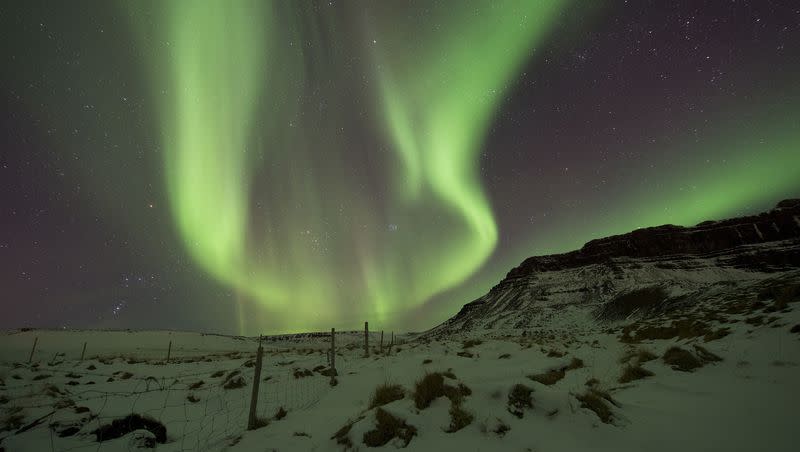Aurora curls were just caught on video for the first time

Aurora curls, which can normally only be detected on sensitive instruments, were just caught on video in Iceland.
Jeff Dai, an astrophotographer and amateur astronomer, was at the Kerid Crater in Iceland on Jan. 16 when he noticed aurora curls above him. The event lasted for only a few minutes, but he was able to capture a time-lapse video and photo, per his YouTube post.
What we know about aurora curls
Aurora curls are rare, so even scientists don’t have a definitive answer to how they form or why they happen, according to the BBC, but it’s believed they are part of the magnetic waves that help create auroras.
NASA reports that auroras are a natural light show that stems from interactions between the sun’s solar storms and the Earth’s magnetic field. Oxygen creates green and red auroras, while nitrogen creates blue and purple ones.
Scientists have several theories as to how aurora curls occur, per the BBC.
“Some experts think that the formation of curls comes from forces driven by extremely low frequency waves. Another theory is that they’re caused when solar particles hit the large waves in Earth’s magnetic field causing them to vibrate, like when you pluck the string on a guitar,” the BBC reported.
The reason why scientists know about the existence of aurora curls, which are typically undetectable to the human eye, is that special magnetic instruments recorded them as squiggly lines via a chart recorder, per Space.com.
We can expect more fantastic aurora shows this year
The sun has what’s known as a solar cycle. The sun’s solar cycle lasts approximately 11 years, and every 11 years the sun’s magnetic poles flip, per NASA.
During the solar cycle, the sun can have massive solar flares and coronal ejections, which can impact the intensity of our auroras and even our electrical grids, per NASA.
The end of 2023 saw one of its biggest solar flares when an X5-class solar flare (one of the biggest it can be) erupted from the moon, according to Forbes.
Tonight’s X5 #SolarFlare! Although the peak of the flare has past, the flare is very much still ongoing. We can expect to see the flare loop system continue to grow for several more hours, as the flare evolves through its decay phase. #spaceweather pic.twitter.com/T2mpIOcjpm
— Dr. Ryan French (@RyanJFrench) January 1, 2024
A new survey from Expedia says that a lot of people are expected to go see the auroras in 2024, per Forbes.
The survey and Forbes described these locations as some of the best to see the northern lights:
Yellowknife, Canada.
Churchill, Canada.
Banff, Canada.
Jasper, Canada.
Narvik, Norway.
Alta, Norway.
Tromsø, Norway.
Isle of Skye, Scotland.
Abisko, Sweden.
Kiruna, Sweden.
Alaska, United States.
Michigan, United States.
Minnesota, United States.

